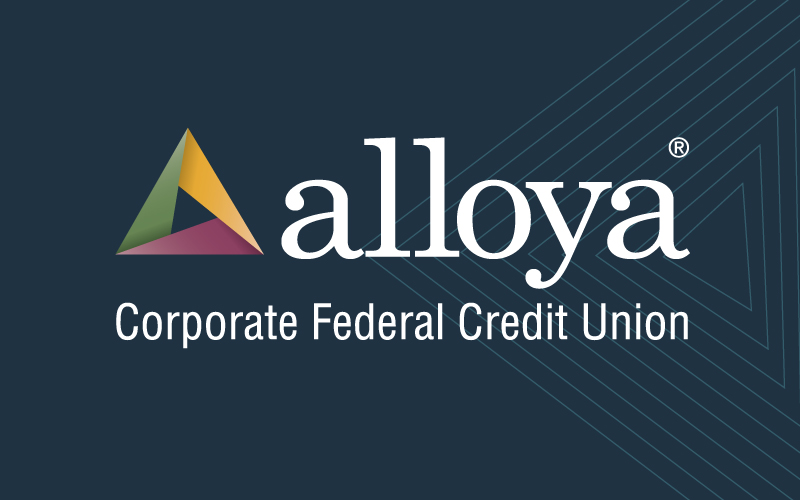How Many Members Can You Afford to Lose?
July 16, 2024

By Kathy Feringa, Vice President, Member Product Support, Alloya Corporate Federal Credit Union
Do you remember “the tube”? The one that suctioned your cash or check and deposit slip from the drive-thru to the teller behind the glass? For those of us who lived through the ‘80s, you know what I’m talking about. For those wondering “what tube?”, give it a Google.
There was a time when the pneumatic tube system was considered cutting-edge technology, and while it’s by no means extinct, as it’s still widely used in settings like hospitals and pharmacies, and even at some credit unions, it’s certainly seen declining popularity within the financial services space. Payments have become so digitized, there’s understandably less demand for short-distance transport of checks or cash from one’s vehicle to a live representative just a few feet away.
From Nice-to-Have to Must-Have
As new financial technologies emerge and go mainstream, higher consumer expectations will emerge as well. I often think back to the rise of online banking. At one point, that was a nice-to-have convenience. Now, it’s widely considered a non-negotiable service. So, what technology of today is a nice-to-have now, yet likely a must-have later?
I predict, alongside many of my colleagues at Alloya and experts throughout the payments industry, that real-time payments are that next must-have thing. The scary part? As a behind-the-scenes service without a consumer-facing brand, members are not likely to waltz into their financial institution and ask for real-time payments, instant payments, FedNow® payments or anything along those lines. They’ll simply know what experience they’re looking for, identify when that need is not being met and shop around until they find it.
Loyalty May Not Be Enough
If your credit union has historically hung its hat on member loyalty, consider the adjective a recent CUToday article ascribed to the latest generation of consumers: fickle. Citing a recent report from PYMNTS and Velera, CUToday shared, “Over the past year, 42% of Gen Z CU members switched their primary financial institution.” Compared to their Gen X counterparts, Gen Zers are more than twice as likely to switch. According to research conducted by The Financial Brand, 44% of consumers indicate they are likely to leave their financial institution for digital banking that is similar to the online shopping experience. While 56% of consumers say they would prefer to bank with a community financial institution, they say their digital offerings do not meet their needs. So, it’s unsurprising that 57% of consumers would consider banking with Apple, Amazon or another non-traditional financial institution to get their needs met.
In other words, there will come a point where access is more highly valued than loyalty. Consumers know what they want, and they’ll do what it takes to get it. So, if your members aren’t asking for real- time or instant payments by name, make no mistake, it’s not for lack of interest. Not asking is not the same as not wanting. In fact, if your members have to ask, it’s likely already too late. Tyler Lange, Director of Payments at Consumers Credit Union in Lake Forest, IL says, “This is something your members are not going to ask for. Your members will feel a difference in a product or service offered by another financial institution or fintech but won’t know what’s behind that difference. At their core, real-time payments are another tool financial institutions can use to improve member experience. Most members probably won’t need it [yet], but they’ll want it.”
Real-Time Adoption Steadily Climbing
Consumers Credit Union was one of the Federal Reserve’s early adopters of the FedNow Service. At the time Consumers went live, there were a mere 30 institutions connected. Now, adoption is north of 800 and growing steadily every day. Similarly, The Clearing House’s RTP® network has over 650 participants and is seeing steady growth, too.
What types of transactions are flowing through real-time rails? At Consumers Credit Union, Lange indicated the bulk of their members’ real-time transactions are earned wages and account-to-account. At Alloya, we’re seeing instant payment activity tied to organizations like Plaid, Grubhub, Robinhood and sports betting facilities. In fact, Grubhub drivers have the ability to do an “Instant Cashout” of their earnings, that is, if their financial institution supports it. Soon, the U.S. Department of Treasury is expected to connect to the FedNow Service for social security disbursements, tax refunds and more.
What Questions Are Your Members Asking Elsewhere?
This has people talking. On the social media platform Reddit, for example, users have shared the following comments and questions.
- “I am a member of a local credit union [that] is listed on the list of FedNow sites–but there is no mention of FedNow [payments] anywhere on the credit union website.”
- “Has anyone heard if any of the high-yield savings accounts (HYSA) are getting FedNow [payments]? My employer pays through [the FedNow Service], so I could conceivably get my paycheck faster… if I can find a bank with a HYSA that offers it [too].”
- “Do FedNow [payments] mean there will be no more ACH delays in transferring money?”
- “Why are account-to-account transfers too slow or costly in the U.S.? Are there any alternatives to ACH or wires?”
These are real comments and questions your members very well might be asking of their social media network, including close friends, distant acquaintances and perfect strangers. What’s your credit union doing to educate and support? Anything? If real-time payments send you running for the hills, consider this piece of advice from Lange:
“Early on, we could see the value in real-time payments, so we read a lot, attended webinars and shared what we could throughout the organization. But ultimately, we felt we had to put our hands on it to learn as much as possible. Connecting to [a real-time network] as a receiver was the foundation.”
Time Is of the Essence
I sat on a panel at the spring member meeting of the U.S. Faster Payments Council. An audience member expressed concerns that real-time payments will take volume away from other types of payments like ACH or wires. I loved the response my fellow panelist shared: “Worry less about transaction volumes shifting from one product to another and spend more time worrying about transactions leaving the credit union completely.”
If you take anything away from this article, let it be this: time is of the essence. We live in a world where things are just a tap or click away. Quite frankly, people have become unwilling to wait for what they need. If you’re serious about supporting your members’ needs today, tomorrow and well into the future, now is the time to get going. Banks, fintechs and other credit unions are already connected or planning to get connected to one or both real-time payment networks because they know these rails are here to stay. How many members can your credit union afford to lose?
To learn more about Alloya and the solutions they offer, connect with the GoWest Solutions Team today.
Sources:
CUToday (June 2024): Gen Z is ‘Fickle,’ But Also a Ripe for Switching to a Credit Union, Study Finds
The Federal Reserve (May 2024): Federal Reserve surveys: U.S. businesses, consumers increasingly adopt faster and instant payment services
Posted in GoWest Solutions, Top Headlines.


















